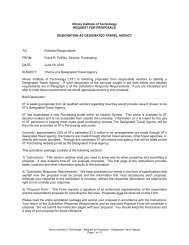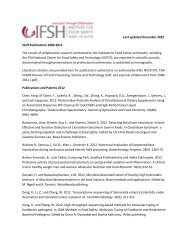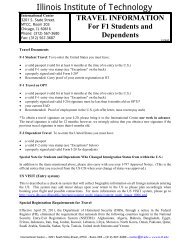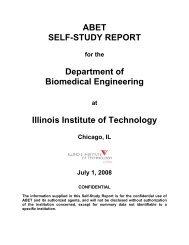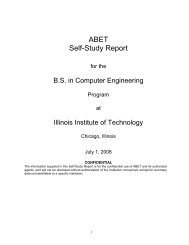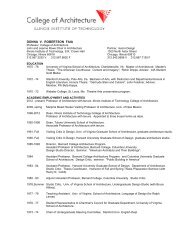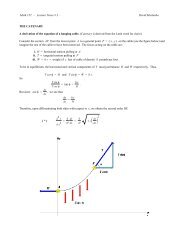Nowness - Illinois Institute of Technology
Nowness - Illinois Institute of Technology
Nowness - Illinois Institute of Technology
Create successful ePaper yourself
Turn your PDF publications into a flip-book with our unique Google optimized e-Paper software.
106<br />
mapping that defined European settlement<br />
<strong>of</strong> the central and western United States.<br />
Simultaneously idealistic, democratic, and<br />
pragmatic, this system parceled out land in<br />
an even and extendible lattice that organized<br />
the nation’s westward expansion, and along<br />
with it, Chicago’s rise. Subtle disruptions—<br />
diagonally radiating avenues, railway lines, the<br />
Chicago River, the lakefront and its system<br />
<strong>of</strong> parks—provide differentiation and a sense<br />
<strong>of</strong> place within the city’s seemingly abstract<br />
spatial system.<br />
10,000 BCE. Formation <strong>of</strong> the Subcontinental<br />
Divide Separating the Mississippi and St.<br />
Lawrence Watersheds at Chicago. In suburban<br />
Oak Park, two raindrops hit the ground<br />
only inches apart. One travels westward to the<br />
Mississippi River and on to the Gulf <strong>of</strong> Mexico;<br />
the other flows east into the Great Lakes,<br />
the St. Lawrence River, and finally the North<br />
Atlantic. Although barely discernable, Chicago<br />
sits on an enormously consequential ridge left<br />
behind by the retreating glaciers <strong>of</strong> the last<br />
ice age. Easy movement between these vast<br />
waterways has made the city a locus for trade<br />
since humans first inhabited the area. Long<br />
before railways, highways, or airports, boats<br />
put Chicago on the map.<br />
8-10 October 1871. Great Fire. Until the evening<br />
<strong>of</strong> 8 October 1871 Chicago was a city <strong>of</strong><br />
wood, built fast and cheap to keep pace with<br />
4 August 1830. Drawing the Grid. From the<br />
blocks <strong>of</strong> Chicago’s first property map drawn<br />
in 1830, Chicago’s street grid expanded to<br />
become the apotheosis <strong>of</strong> the Cartesian<br />
its explosive growth. When fire broke out in a<br />
barn on the city’s south side, winds drove the<br />
blaze north across the city center. After two<br />
days a thriving hub <strong>of</strong> commerce was reduced<br />
to ashes. Chicago’s formidable architectural<br />
heritage is rooted in this destruction. In the<br />
decades following the fire, the city reinvented<br />
itself, implementing strict building codes, investing<br />
in modern infrastructure, preserving public<br />
space, and planning for future growth. The city<br />
burned but a metropolis rose from its ruins.<br />
107<br />
Legacy<br />
Chicago



